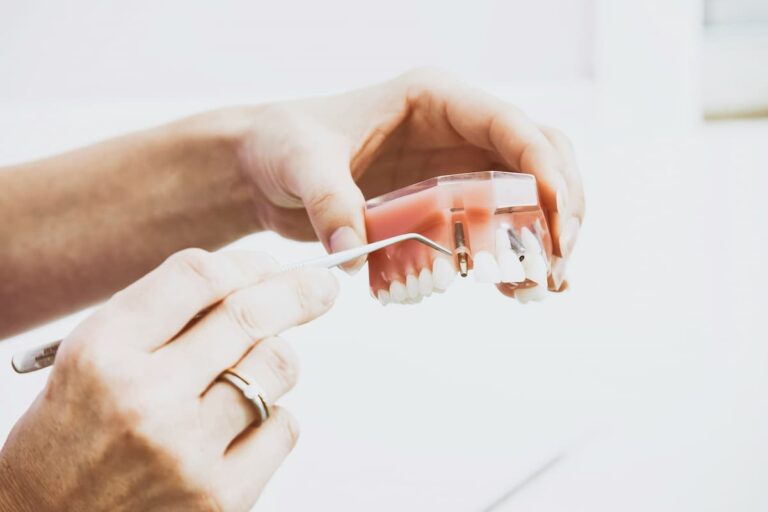Fixed Dental Bridges
Inquire About Fixed Dental Bridges
When teeth are missing, a series of changes can impact your overall dental health and jaw function may be initiated.
The adjacent teeth may start to drift or tilt into the space, and teeth in the opposing jaw may start to shift toward the area of the missing tooth. It is therefore important to replace the single tooth or multiple teeth which have been lost.
One of the best options to prevent the consequences of shifting teeth and to restore full function to a small edentulous section in the mouth is a dental bridge.
What is a dental bridge?
A dental bridge replaces the missing teeth with artificial teeth called “pontics” and is supported on the ends by prepared natural teeth.
Once fabricated and fitted a dental bridge will be permanently “fixed,” or cemented into place.
Like crowns, bridges can be made of either porcelain baked on to a metal substrate or many of the new ceramic materials that have been developed.
- A fixed bridge replaces a missing tooth or teeth. It is called a fixed bridge because it is not removable.
- A bridge is a structure, supported by teeth on either side of a space. It spans the gap between teeth, just as a bridge spans a river.
How is a bridge made?
The first step is to prepare the supports for the bridge. Replacement crowns are placed over existing teeth as supports for a bridge.
The dentist pares down the teeth on either side of the gap, and takes an impression of the prepared teeth.
This is then sent to the dental technician where the bridge is made.
The technician will make a replacement crown for each prepared tooth.
These crowns are joined to an artificial tooth, which replaces the missing tooth.
The dentist will then cement the completed bridge over the prepared teeth.
The dentist will make and install a temporary acrylic bridge which will protect the teeth and prevent sensitivity.
When performed properly, one can eat normally with a temporary bridge.
What is the fixed bridge usually made of?
The base or framework is made of precious or non-precious metal to which tooth-colored porcelain is fused.
Since the development of new stronger ceramic materials, bridges can now be made entirely of porcelain.
Frequently Asked Questions
We do get quite a lot of questions about fixed bridges. Below you’ll find common questions and answers.
Is the preparation of bridgework painful?
The procedure is not painful, because a local anesthetic is used during the paring of the teeth, and the taking of the impression.
It is seldom necessary to take an analgesic for pain relief after the treatment.
Will there be any sensitivity after the bridges are placed in the mouth?
Sensitivity to hot and cold sometimes occurs after the bridge has been cemented, but this is usually temporary.
Will a fixed bridge look good?
Fixed bridges can be made to look natural and to match the adjoining natural teeth.
A bridge in the front of the mouth will restore and even improve the smile.
How well will I be able to chew with a fixed bridge?
Eating with a fixed bridge should be as comfortable as with natural teeth.
How successful are fixed bridges?
Fixed bridges have been used successfully to replace one or more missing teeth.
They can last for many years.